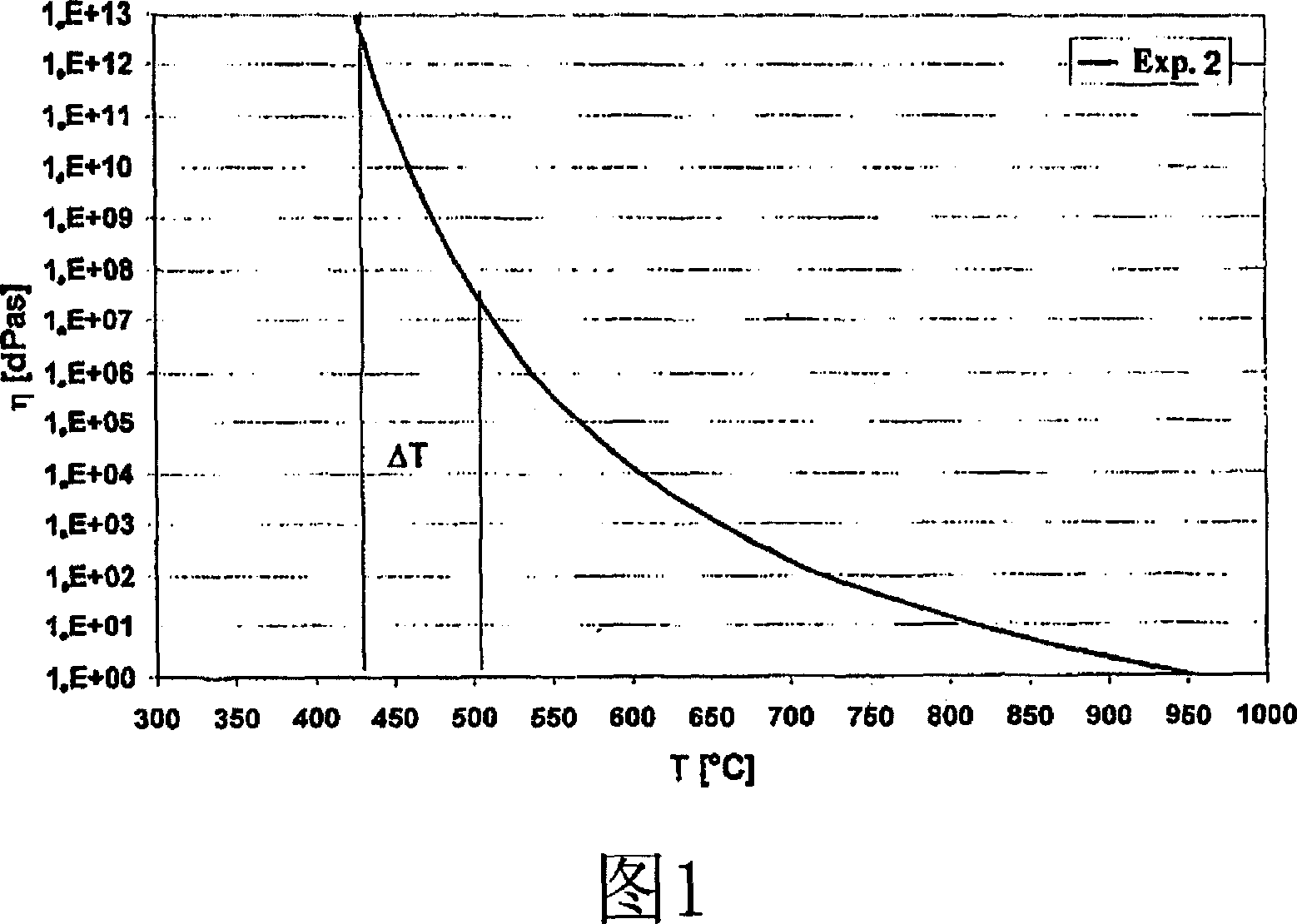Lead and arsenic free optical glass with high refractive index
A glass, ratio technology, applied in the field of optical components and preforms of such optical components, can solve the problems of difficult to accurately adjust glass composition, long viscosity curve, increased glass transition temperature, etc.
- Summary
- Abstract
- Description
- Claims
- Application Information
AI Technical Summary
Problems solved by technology
Method used
Image
Examples
example
[0061] The following examples illustrate preferred glasses according to the invention and should not limit the scope of protection of the invention.
example 1
[0063] Weigh out the raw material of the oxide, add one or more clarifiers (such as Sb 2 o 3 ), and then mix it well. The glass mixture was melted at about 970° C. into a continuous molten aggregate with introduction of oxygen bubbles, followed by fining (970° C.) and homogenization. At a casting temperature of about 970°C, the glass can be cast and processed into desired dimensions. Experience has shown that in large volume continuous aggregates the temperature can be reduced by at least about 100K and the material can be processed to near net geometry by pressing methods.
[0064] Table 1: Calculated melting examples for 100 kg of glass (according to example glass 6)
[0065] Oxide
[0066] The properties of the glass thus obtained are given in Table 2 in Example 6.
[0067] instance number
[0068] instance number
[0069] The glasses according to the invention have a glass transition temperature Tg of less than or equal to 470° C., can be ...
PUM
| Property | Measurement | Unit |
|---|---|---|
| transition temperature | aaaaa | aaaaa |
| glass transition temperature | aaaaa | aaaaa |
| refractive index | aaaaa | aaaaa |
Abstract
Description
Claims
Application Information
 Login to View More
Login to View More - R&D
- Intellectual Property
- Life Sciences
- Materials
- Tech Scout
- Unparalleled Data Quality
- Higher Quality Content
- 60% Fewer Hallucinations
Browse by: Latest US Patents, China's latest patents, Technical Efficacy Thesaurus, Application Domain, Technology Topic, Popular Technical Reports.
© 2025 PatSnap. All rights reserved.Legal|Privacy policy|Modern Slavery Act Transparency Statement|Sitemap|About US| Contact US: help@patsnap.com


